For many people, one of the challenging tasks of a zero-gluten diet is finding the best gluten-free bread. You may be asking yourself, how gluten-free bread is made, gluten free bread vs regular bread? Bread is a staple food in a lot of cultures, and each region will have its own interpretation of it. Unfortunately, zero gluten limits your capacity to enjoy the bread, at least in its classical form. Bread with zero gluten does exist, and it can be just as delicious as its wheat-based counterparts. However, there are some key differences. This article discusses how traditional wheat-based bread differ from gluten-free bread.
| PRODUCT | BRAND | EXPERT RATING | CHECK PRICE |
|---|---|---|---|
 | Schar Gluten-Free Artisan Baker White Bread | Check Price |
|
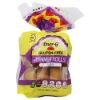 | Ener-G Tapioca Dinner Rolls Gluten and Wheat Free | Check Price |
|
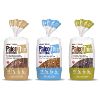 | Julian Bakery Paleo Thin Bread | Check Price |
What happens when you eliminate gluten in bread? — how gluten free bread is made, gluten free bread vs regular bread
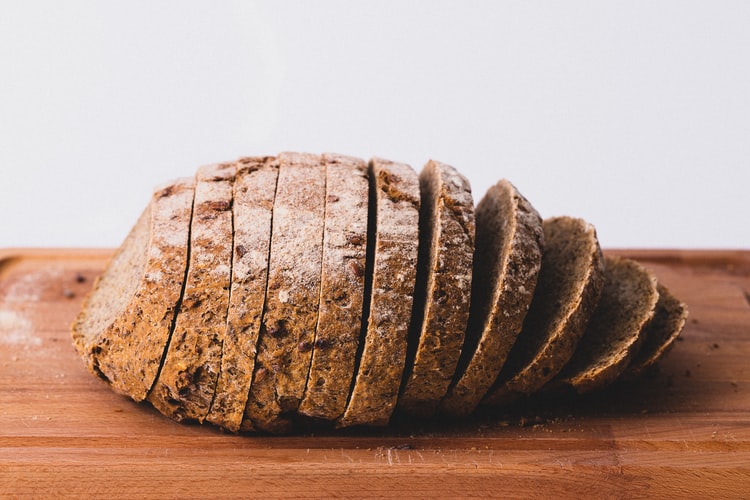
The gluten proteins are crucial in making bread and are given a special place by the baker. It is a fact that without gluten, the light porous consistency of wheat bread you are familiar with would be impossible to achieve. How gluten free bread is made, gluten free bread vs regular bread?
The gluten in a loaf is the component or framework that binds the loaf together and retains the dough’s air. It is the stretchy quality of gluten, which gives the dough the ability to rise and expand in the oven. How gluten free bread is made, gluten free bread vs regular bread?
When water is combined with flour, gluten is formed. It is a homogeneous mass, and it is during this process that the rising of the dough and the fibers of gluten create supporting material for the loaf.
Flour
Flours with zero gluten do not provide the same stretchy structure and texture associated with typical bread and baked goods. How gluten free bread is made, gluten free bread vs regular bread?
Gluten free can be described as denser and lacking in light texture typically found in wheat bread. Additionally, gluten-free bread may result in a crumbly texture, which spoils quickly. Gluten-free bread are sold on the market, and they are made from grains such as rice and corn. Improvements are constantly being applied to enhance bread texture as new ingredients and manufacturing methods are developed. However, the development of these breads is challenging since there is no supporting structure to retain air given off by the raising agent without gluten.
What Makes Gluten Free Bread Different? — how gluten free bread is made, gluten free bread vs regular bread
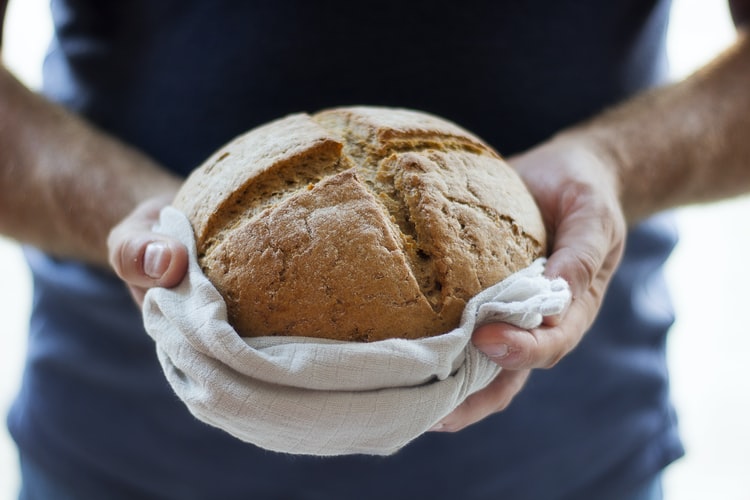
If you were to place a loaf of gluten-free bread next to a classical wheat-based loaf, they might look similar in appearance. It will all depend on the flour used, of course.
Here are some top features to look for that makes gluten-free bread different:
Taste quality
How gluten free bread is made, gluten free bread vs regular bread?
The taste of gluten-free bread is variable. The most challenging aspect of gluten-free bread is also what makes it different. Various flours to choose from, which have its own unique flavor, make gluten-free bread have different tastes. In contrast, wheat-based bread is consistent in both taste and texture.
Less spongy
The texture of gluten-free bread is less spongy. Gluten is a protein in ingredients such as wheat and barley, which gives baked products its typical spongy texture. How gluten bread is made, gluten free bread vs regular bread? Bread that has zero gluten is denser than wheat bread, and some gluten-free flours are even gritty.
Short shelf life
Not only does reheating gluten-free bread make it stale quickly but overall, it doesn’t last long as its wheat-based counterparts. Because of this, many gluten-free breads are vacuum sealed or sold frozen. How gluten free bread is made, gluten free bread vs regular bread? To get the optimum taste out of these pieces of bread, they should be eaten toasted, unless they are vacuum-sealed pack.
Doesn’t rise
How gluten free bread is made, gluten free bread vs regular bread? Gluten free bread doesn’t rise as much. Wheat-based bread rise wonderfully, which contributes to their airy texture. Gluten-free bread typically have ingredients that have made them heavier which also contributes to their small size.
Browning
How gluten free bread is made, gluten free bread vs regular bread? Gluten-free bread may not brown in the traditional way. A bread that is evenly browned is the mark of a beautiful baking outcome, but gluten-free bread doesn’t brown as consistently. You can make your gluten-free bread evenly brown by applying milk or beaten eggs before putting it in the oven.
Different flours
How gluten free bread is made, gluten free bread vs regular bread? Each gluten-free bread will be different depending on the floor that has been used in the baking process.
The Top 10 Gluten-Free Flours for Homemade Bread– how gluten free bread is made, gluten free bread vs regular bread
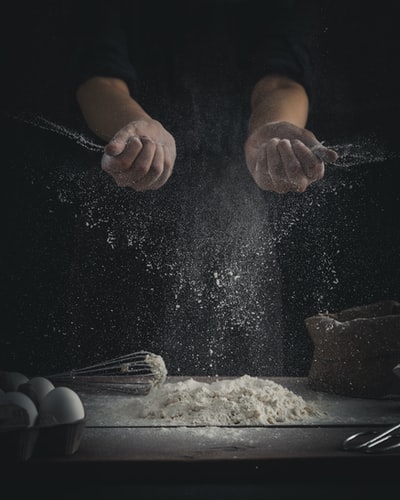
If you like to try your skill at gluten-free bread, making you will need to gather an assortment of gluten-free flours. Some flours will work for certain purposes, so invest time to learn the basic rules about each so you can choose the best one for your needs.
The following is an exploration of the top gluten-free flours for gluten-free bread:
Amaranth Flour
This is regarded as a pseudo-cereal and not a grain. This flour type is nutty, earthy, and tends to absorb the flavor of other ingredients. You can utilize this as a replacement for 25% of wheat flour in a recipe, but it is best combined with other flours.
Almond Flour
This flour consists completely finely ground almonds. It is a top choice for gluten-free flour for all baking methods. In many instances, you can replace a ratio of wheat flour though you should add an additional egg and be ready for the final product being a bit denser.
Arrowroot Flour
This is typically more of starch rather than flour. This flour is extremely versatile and mixes well with almond flour, coconut flour, and tapioca flour. You can use it by itself, especially if you want your bread to be crispy or crunchy.
Buckwheat Flour
This flour is typically derived from pseudo cereals. It has a rich and earthy flavor that can work well in bread making. But it does tend to be a bit crumbly, so for optimal results, combine it with another gluten-free flour.
Cassava Flour
This flour is made by drying the root of the cassava. Cassava flour is similar to wheat flour and other gluten-free flour. The flavor is neutral and is easily digestible, and can be substituted at a ratio of 1:1 in most recipes.
Coconut Flour
This is made from the dried meat of the coconut. This type of flour has a mild coconut taste. The coconut flour will yield a similar texture to wheat flour, which makes it ideal for breadmaking but keep in mind that it tends to absorb more moisture than other gluten-free flours.
Oat Flour
This flour is made from whole-grain oats. Oat flour has tons of flavor, but it tends to give baked goods a chewy, crumbly feel. Some recipes may give more moisture than wheat flour, so you may need to experiment on and adjust the liquid content of your recipe.
Sorghum Flour
In contrast to other whole-grain sorghum is lightweight and mildly sweet and flavor. It is rather heavy, so you should combine it with another gluten-free flour or only apply it in recipes that call for small amounts of flour.
Tapioca Flour
This is made from starchy liquid. Tapioca flour has little flavor, and it is best combined with other gluten-free flours.
Teff Flour
You can choose a wide range of colors of this flour. Teff holds the record of the world’s smallest grain, and it can be used as a replacement for wheat flour. It is crucial to combine it with other gluten-free flours.
Top 3 gluten-free breads– how gluten free bread is made, gluten free bread vs regular bread
OUR TOP PICK!
OUR TOP PICK!

Product Name: Schar Gluten-Free Artisan Baker White Bread
Product Description: When you are trying to follow a gluten-free lifestyle, it is easy to find yourself overlooking some basics that people who are digestion unimpaired disregard. Sliced bread, which is real bread, may not seem to be the essential food in your nutrition, but when you think of all the delicious things you can put between those slices, your imagination is the limit. Brands such as Schar are very passionate about giving back a bit of normalcy to those who are abstaining from gluten-free products for health reasons. Thus, they use a mixture of other gluten-free products with combinations of other ingredients that imitate regular bread texture and rise. Making gluten-free products in your kitchen is a tough task, and it is a scientific process that is best left to the experts. So, when you have cravings for French soup or maybe a hot bowl of bread pudding, turn to experts you can trust with your health but also your gastronomic satisfaction.
Availability: InStock
-
Taste
-
Nutrition
-
Ingredients
Overall
Summary
One reviewer raved that this is their absolute favorite gluten-free bread. For people with celiac disease or those suffering from other serious symptoms, they have tried dozens of gluten-free brands. Other breads will taste terrible and have soggy texture. This product has a nice size and similar to regular bread. The taste and texture are great and make a fabulous toast.
Pros
- Uses gluten-free starches like those found in corn and rice
- Combination of other ingredients that mimic the texture of regular bread
- Artisans you can trust with your health
Cons
- No negative reviews so far
Runners Up
Ener-G Tapioca Dinner Rolls Gluten and Wheat Free
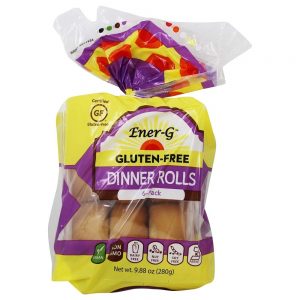
Since the 1960s, this brand has baked low protein breads for patients who are suffering from kidney disease. They have done their best to meet the challenge of consumers with restricted diets. Ener-g offers not only wheat free and gluten-free breads but also products that are low protein and egg-free,
Their bakery focuses on creating wheat-free gluten-free baked products that guarantee that gluten contamination will not transpire. The innovative packaging of their products guarantees a year shelf life without the need for refrigeration. Products are baked as orders are received to ensure that the freshest possible products are delivered.
The breads are fresh and wrapped in current vacuum packaging methods, guaranteeing that they are fresh when consumed prior to the best before date. Since it has such a long shelf life, you can continuously enjoy your bread.
It is recommended that you store the bread once it has been opened. Please put it in an airtight storage box or refrigerator. Avoid freezing the bread in their original packaging since it will cause them to dry and crumble.
If you want to freeze them, it is best to remove them from the original packaging and put them in a freezer-friendly storage box.
Julian Bakery Paleo Thin Bread

Why should you settle for one type of freshly tasting bread when you can have three flavors? This gluten-free bread is available in almond flavor, coconut flavor, and seed medley flavor, which gives you the chance to enjoy these unique and popular flavors anytime. Each loaf is gluten-free and grain free for a snack or meal that is supportive of your keto diet.
The almond bread and seed medley flavors are top-notch once toasted, and all provide an excellent way to curb your appetite while avoiding carbohydrates from gluten and grains.
When you arrive home with the bread, it is a good move to put a wax paper between each slice and put them immediately in the freezer. Once you pop them out, you can prepare your toast or sandwich, and you will be all set. It is the perfect bread for a keto or paleo diet. The seed bread particularly has a hearty, dense consistency.
Final thoughts
You may be asking how gluten free bread is made, gluten free bread vs regular bread? If you are following the gluten-free diet, you may want to try your hand at making gluten-free baked goods right in the comfort of your home. If you are an expert baker, creating gluten-free products wouldn’t be much of a challenge. But if you are constantly busy and don’t have time to experiment in the kitchen, your best option is to look for ready-made gluten-free bread that promises high-quality ingredients and excellent taste.
